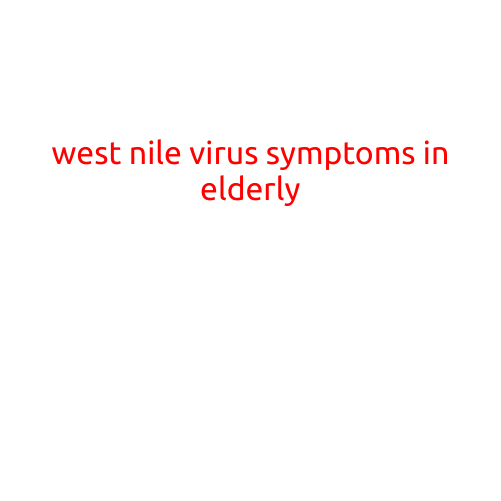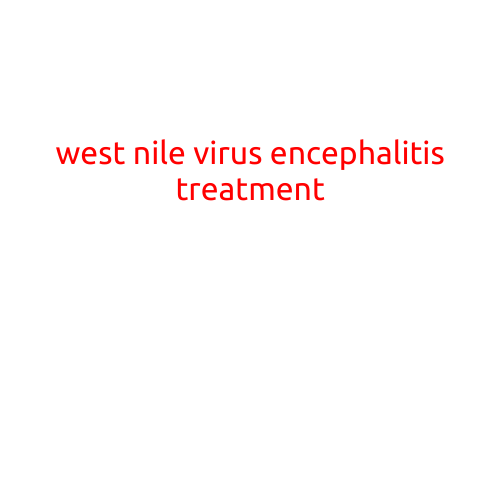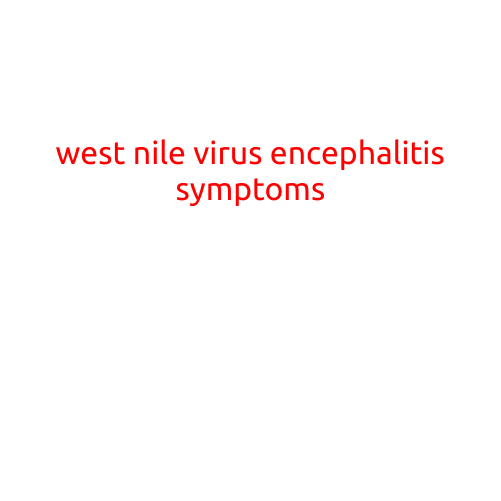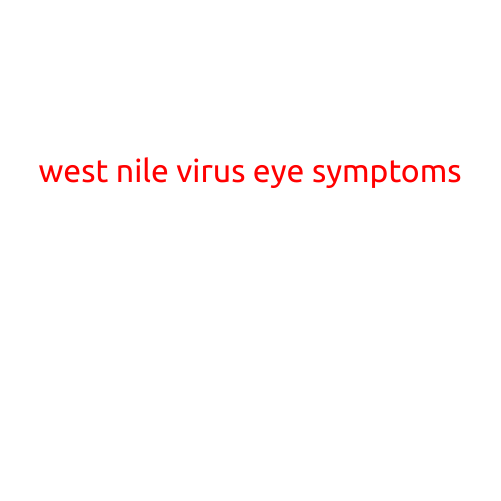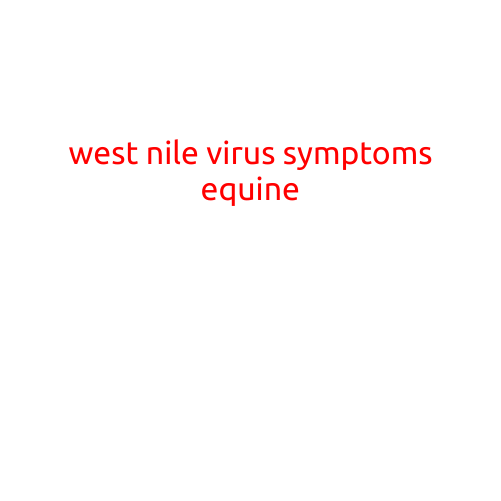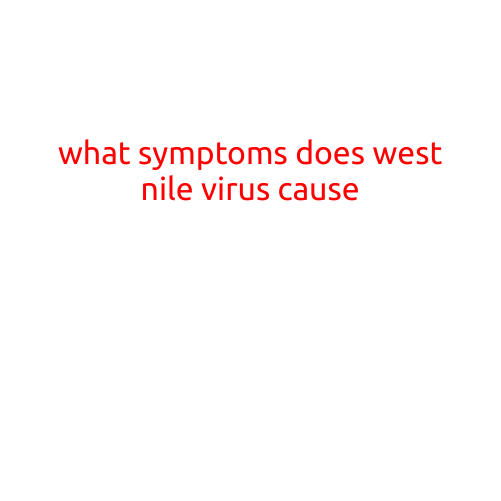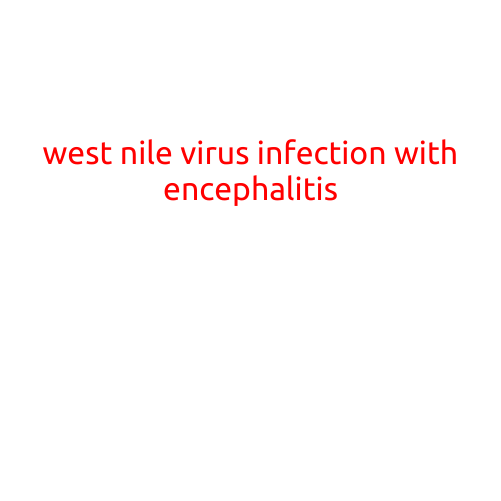
West Nile Virus Infection with Encephalitis: Understanding the Risks and Treatment Options
West Nile virus (WNV) is a mosquito-borne flavivirus that has been a significant public health concern in recent years. In 2019, the Centers for Disease Control and Prevention (CDC) reported over 2,400 cases of WNV infection in the United States, with a significant number of these cases resulting in encephalitis, a serious and potentially life-threatening condition.
What is West Nile Virus Encephalitis?
Encephalitis is a medical emergency that occurs when the brain becomes inflamed, often due to an infection or inflammation. West Nile virus encephalitis is caused by the WNV, which is transmitted to humans through the bite of an infected mosquito. The virus attacks the central nervous system, causing the brain to become inflamed, leading to the development of encephalitis.
Symptoms of West Nile Virus Encephalitis
The symptoms of WNV encephalitis can vary in severity, but they often include:
- Headache
- Muscle weakness
- Fever
- Confusion
- Vomiting
- Seizures
- Confusion, disorientation, and changes in mental status
Risk Factors for West Nile Virus Encephalitis
Certain individuals are at higher risk of developing WNV encephalitis, including:
- Older adults (over 50 years)
- People with certain medical conditions, such as cancer, diabetes, and kidney disease
- People who have received organ transplants
- Those who have a weakened immune system
Diagnosis and Treatment of West Nile Virus Encephalitis
Diagnosis of WNV encephalitis is often based on laboratory testing, including:
- Blood tests to detect the presence of WNV antibodies
- Cerebrospinal fluid analysis to confirm the presence of the virus
- Imaging tests, such as MRI or CT scans, to rule out other conditions
Treatment for WNV encephalitis is generally focused on relieving symptoms and supporting the patient’s overall health. Treatment options may include:
- Supportive care, such as rest, hydration, and pain management
- Antiviral medications, such as ribavirin, in some cases
- Intensive care, including mechanical ventilation and dialysis, in severe cases
Complications and Long-Term Effects
While most people recover from WNV encephalitis, some may experience long-term effects, including:
- Neurological problems, such as memory loss, difficulty concentrating, and mood changes
- Musculoskeletal problems, such as arthritis and muscle weakness
- Cognitive impairment and personality changes
Prevention and Control Measures
The best way to prevent WNV encephalitis is to take steps to prevent mosquito bites:
- Use insect repellents, such as DEET or picaridin
- Wear protective clothing, such as long sleeves and pants
- Avoid areas with high mosquito activity
- Install window and door screens to prevent mosquitoes from entering homes
Additionally, public health agencies and communities can take steps to reduce mosquito populations and prevent the spread of WNV, including:
- Conducting mosquito surveillance and control measures
- Providing education and awareness campaigns to the public
- Implementing vaccination programs in areas where the virus is common
Conclusion
West Nile virus encephalitis is a serious and potentially life-threatening condition that requires prompt medical attention. Understanding the risks and treatment options is crucial for individuals to take steps to prevent the infection and seek medical care if symptoms occur. By taking preventive measures and being aware of the risks, individuals can reduce their risk of developing WNV encephalitis and minimize its impact.
